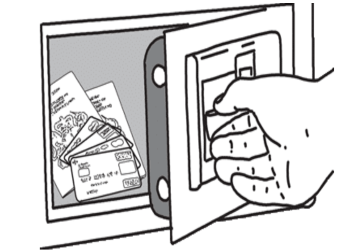
Beneficiaries are selected through a multi-tiered targeting process, combining geographical prioritisation of poorest districts, categorical and poverty targeting at household level, and community-based validation.
Based on data collected at household level, households are classified as categorically eligible if they are labour-constrained and are food-poor if their poverty score based on Proxy Means Testing (PMT) is above a certain threshold

The score

Results validated and verified
Issuance of Beneficiary cards and registration

Beneficiaries are informed and told important dates and information

Registration of heads of household and their proxies on Form 5

Travel Costs Re-imbursed
First Meeting First Payment (FMFP)
 Payment Delivery Process: Organisation of payment meetings
Payment Delivery Process: Organisation of payment meetings
- The DSWO organises meeting at ward level to inform beneficiaries on key programme parameters:
- How they have been selected (targeting criteria)
- The volume of transfers to be received
- Frequency of payments
- How, where and when they will receive their transfers
- How they should use the money
- Whom they should approach in case of complaints
![]() Payment Delivery Process
Payment Delivery Process
Heads of household who have difficulties to travel to the pay point (e.g. too old or disabled) nominate an alternate
DSWO documents the names and ID numbers of the representatives in Form 5 and enters them subsequently in the district level and national data banks
The DSWO will hand out the cards for the alternates at the second pay-day
Payments to beneficiaries are made bi-monthly
- Head office informs DSWO on beneficiaries that failed to collect their payments (using Form 7 – refer to manual).
- Child Protection focal person has to follow up and to report to DSWO why household has not collected payments
- If the beneficiary household does not collect payment for 5 successive cycles, the household is removed from the programme
